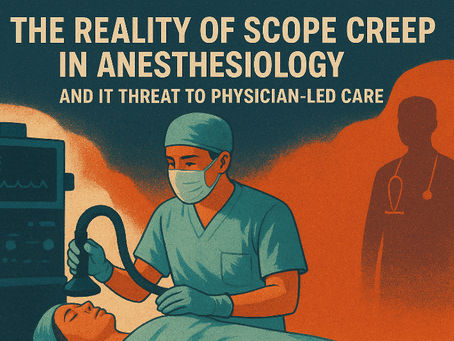top of page


AI Will Replace the Physician? It's Already Replacing the Intern
Beyond training and decision-making, AI is poised to shake up the economics of the medical profession – an area many prefer not to think about. Medicine has long been relatively protected from automation. The diagnostic reasoning and complex interpersonal skills of physicians were considered irreplaceably human, which helped justify the intensive training and high salaries doctors command. In economic terms, physicians have been both scarce and valuable because what they do i
Oct 1728 min read


The Real Cost of Becoming a Doctor: A 2025 Breakdown
TL;DR: Becoming a doctor in the U.S. is expensive in more ways than one. Medical school tuition and fees alone typically run from around $40,000 to $75,000 per year (public vs. private) and the median four-year cost of attendance is about $286k (public) to $391k (private). But that’s just the beginning – **most students finance these costs with loans, leading to debt often well over $200k by graduation. If you include those who had undergrad loans or who accrue interest durin
Oct 1418 min read


Scope Creep in Anesthesiology: Midlevel Expansion vs. Patient Safety
What do outcomes data say? The truth is, robust evidence directly comparing solo CRNA care to anesthesiologist care is not abundant – mainly because anesthesia care in the U.S. is very safe across the board, making differences hard to detect without huge sample sizes. That said, physician advocates highlight research that questions the supposed equivalence of CRNA care in certain contexts. For example, studies of “opt-out” states have found no improvement in access to surgica
Aug 1424 min read


One Big Beautiful Bill Act: What Med Students Need to Know About New Student Loan Changes
The “One Big Beautiful Bill Act” carries big implications for how future doctors finance their education and repay loans. It’s a developing story that all medical students should watch. The good news: even in the new proposed system, there are protections against runaway debt and options to make payments manageable (interest subsidies, income-based caps, etc.). The challenge: students may need to be more resourceful with funding and patient with longer repayment horizons.
May 2232 min read


The Realities of Dating a Medical Student, Resident, or Physician
Dating anyone has its share of challenges, but loving a doctor or future doctor brings a unique mix of rewards and stresses. Doctors-in-training and physicians juggle life-and-death responsibility with long hours, demanding education, and sometimes unpredictable schedules. Whether you’re dating a medical student cramming for boards, a resident working 24-hour shifts, or an attending physician on call at odd hours, the realities can be surprisingly stark.
May 714 min read


The Medical Exodus: Why U.S. Physicians Are Leaving Medicine
Why are so many doctors burned out and disenfranchised? The answers lie in a mix of workplace pressures and personal factors. Broadly, physicians cite excessive stress and workload (burnout), crushing administrative/EHR burdens, financial pressures, dwindling professional autonomy, and poor work-life balance. Below we break down each factor, citing surveys and expert commentary, before exploring counterpoints, pros/cons, and an overall “justification score” for leaving medici
Apr 308 min read
bottom of page